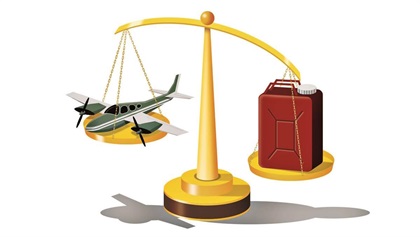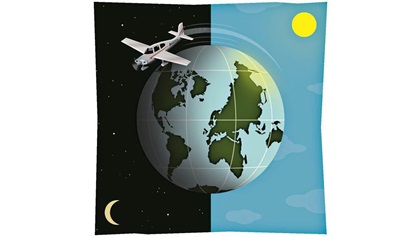 Checkride-ready
Checkride-ready
See how you measure up to FAA standards with these questions from the AOPA Pilot Information Center.
- What type of military flight operations should a pilot expect along Instrument Route 644?
A. IFR training flights above 1,500 feet above ground level at speeds in excess of 250 knots.
B. Instrument training flights below 1,500 feet agl at speeds in excess of 150 knots.
C. VFR training flights above 1,500 feet agl at speeds less than 250 knots. - What are the minimum requirements for airplane operations under special VFR in Class D airspace at night?
A. The airplane must be under radar surveillance at all times while in Class D airspace.
B. The airplane must be equipped for IFR with an altitude reporting transponder.
C. The pilot must be instrument rated, and the airplane must be IFR equipped. - What are the minimum requirements for helicopter operations under special VFR in Class D airspace at night?
A. The helicopter must be operated with an ATC clearance.
B. The helicopter must be equipped for IFR with an altitude reporting transponder.
C. The pilot must be instrument rated, and the helicopter must be IFR equipped. - Under what condition, if any, may pilots fly through a restricted area?
A. When flying on airways with an ATC clearance.
B. Regulations do not allow this.
C. With the controlling agency’s authorization. - An aircraft is loaded 80 pounds over maximum certificated gross weight. If fuel (gasoline) is drained to bring the aircraft weight within limits, how much fuel should be drained?
A. 11.5 gallons.
B. 13.3 gallons.
C. 16 gallons.
 Ace
Ace
Can you correctly answer these questions from retired TWA captain and 28,000-hour pilot Barry Schiff?
- True or false? There are 25 time zones covering the Earth.
- True or false? Intense snowfall rates can be generated by winter thunderstorms.
- A normally aspirated, single-engine airplane has a maximum climb rate of 1,500 feet per minute at sea level and 1,000 fpm at 5,000 feet mean sea level. It therefore has a service ceiling of
A. 14,000 feet msl.
B. 15,000 feet msl.
C. 16,000 feet msl.
D. 17,000 feet msl. - When a pilot flies into the region of reversed command,
A. he will encounter aileron reversal.
B. the airplane will need more power to fly more slowly.
C. he will detect a high-frequency buffet.
D. the aircraft will stall. - What is the call sign given to a general aviation aircraft in which a current U.S. president is flying?
Illustrations by John Ueland
Final Exam Answers
- The correct answer is A. The IR portion indicates this is an IFR military training route. The 644 portion, because it is three numbers, means the route has at least one segment above 1,500 feet agl. Speeds in excess of 250 knots are common and are to be assumed for any military traffic using these routes. (Aeronautical Information Manual 3-5-2)
- The correct answer is C. Special VFR operations at night require the pilot to be instrument rated and the airplane IFR equipped. (FAR 91.157[b])
- The correct answer is A. Special VFR operations, day or night, must be conducted with a proper ATC clearance. For special VFR operations at night in helicopters, the pilot is not required to hold an instrument rating, and the helicopter is not required to be IFR equipped. (FAR 91.157[b])
- The correct answer is C. A pilot may operate in a restricted area if the pilot has the permission of the using or controlling agency. (Aeronautical Information Manual 3-4-3 and FAR 91.133)
- The correct answer is B. Aviation gasoline (avgas) has a nominal weight of 6 pounds per
gallon. Dividing the weight to be removed by 6 yields the proper answer. - True. There are 23 full-size time zones and two half zones that are separated by the International Date Line. The time is the same in each half zone, but the date in each is different.
- True. Called thundersnow, this occurs when violent up- and downdrafts at subfreezing
temperatures discourage the melting of snow and ice into rain. - The correct answer is A. The climb rate of a lightplane with a normally aspirated (not turbocharged) engine decreases in linear fashion. In this case, the climb rate decreases 100 fpm per 1,000 feet of climb. Because the service ceiling of a
single-engine airplane is the highest altitude at which it can climb 100 fpm, the service ceiling of this airplane must be 14,000 feet. Its absolute ceiling is 15,000 feet. - The answer is B. The region of reversed command is the formal name given to that mode of flight when the airplane is flying behind the power curve. This is when additional power is required to maintain altitude as airspeed decreases.
- Executive One.


